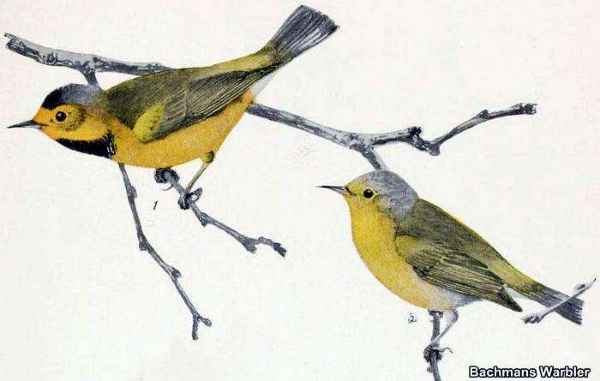1. Dodo Bird
The Dodo bird was a flightless bird that lived in the island of Mauritius in the Indian Ocean. There, the Dodo bird inhabited and nested on the ground as it had already lost its need and ability for flight.
- By evolution, the dodo birds did not have any natural predators (of course, except humans!)
- The start of the 1500s marked the arrival of humans to the island. Dodo birds have since then been widely hunted for fresh meat, thus reducing their large number.

2. Carolina Parakeet
The Carolina parakeet, the only parrot endemic to North America, was characterized by having a vibrant green coloration for the majority of its body, bright yellow colored head, and shoulders, and a very distinct orange forehead.
- Carolina parakeets were considered to be poisonous as animals (like cats) that feed on them die from doing so

3. Bachman’s Warbler
Known to be a migrant that breeds in the regions of United States and some parts of China, the Bachman’s warbler is a sexually dimorphic bird species that are considered to be extinct.
- The last breeding was officially recorded in 1937; no further reports have been done since then.

4. Tasmanian Emu
As its name suggests, the Tasmanian Emu was a subspecies of the Emu bird endemic to the region of Tasmania in Australia.
- In comparison to their relative Emus, the Tasmanian Emus were believed to be smaller and appeared to be darker with the absence of the black feather that distinguishes Emus.
- Records show that in just 20 years (from 1830 to 1850s), the Tasmanian emu went extinct from being locally extinct.

5. Arabian Ostrich
The next extinct bird in the list is the Arabian ostrich which is also known as the “Camel bird.” This bird inhabited the regions of the Middle East several million years ago.
- In the Middle East, this bird was widely hunted for its feathers, skin, and eggs. In addition, the large size of these birds makes them ideal as a dinner choice, along with other animals like camels and zebras.
- During the early 20th century, the population of the Arabian ostrich was greatly reduced as a byproduct of World War II. Finally, the last Arabian ostrich recorded was found in Bahrain in 1941.






